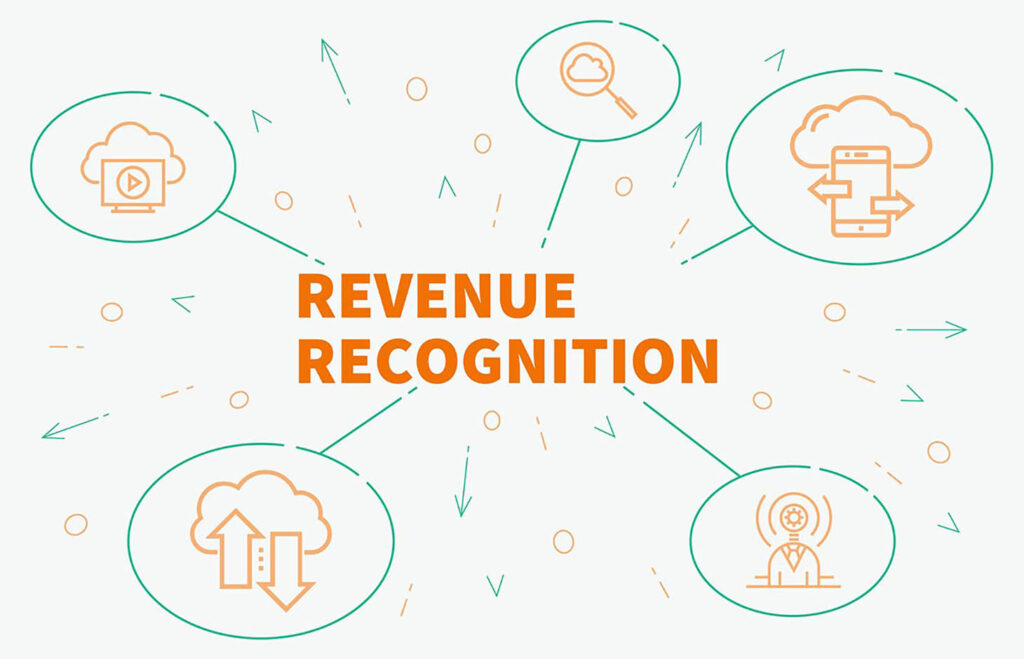A report by the Committee of Sponsoring Organizations of the Treadway Commission found that over a ten-year period, improper revenue recognition accounted for 60% of fraudulent financial reporting cases investigated by the Securities Exchange Commission (SEC).
However, revenue recognition isn’t only important from a regulatory perspective. While smaller businesses might not think external parties need to see their financial statements, this information is vitally important to financial institutions, investors, advisory boards, and shareholders.
Accurate revenue recognition is an integral component of any business; it’s one of the most important factors used by prospective investors to determine value. Even for private businesses, accurate accounting of earned and deferred revenue is key to ensuring your operation runs smoothly.
Accurate revenue reporting can also provide valuable insights. Having a complete picture of your cash flow and revenue allows you to make educated decisions and plan for the long-term.
Additionally, incorrect revenue recognition can lead to a negative brand image. This can be especially detrimental for businesses looking to go public.
Having an accurate and full picture of your financial situation is the only way to attract investors.
Now, with the new ASC 606 financial reporting standard in effect, revenue recognition is more important than ever. In light of the new guidelines, it’s clear that businesses should be putting a greater effort into their revenue recognition capabilities.
Revenue recognition has changed
In 2014, the SEC overhauled the Generally Acceptable Accounting Principles (GAAP) guidelines governing business finance reporting.
GAAP defines the conditions under which income can be classified as revenue. The new guidelines set specific requirements regarding the data businesses need to record and include in revenue disclosures.
In addition to financial statements showing revenue and its sources, businesses must also include the specific goods and services they provide in revenue recognition reports. The new guidelines change how businesses report things like returns, discounts, and breaches of contract.
The guidelines also include ASC 606, which addresses revenue from contracts with customers. This new revenue recognition standard dictates that businesses should only recognize revenue as the value of the product or service has been received by customers. It’s especially important for subscription businesses to understand ASC 606 requirements since their business model involves providing services over a defined period of time.
These new standards went into effect for public businesses in December 2017, but other businesses had until December 2018 to prepare.
The cost of revenue recognition compliance
In January, professional services firm Ernst & Young released the results of their annual revenue recognition survey. According to the report, in 2018 most major U.S. businesses spent more than expected to comply with revenue recognition requirements.
This increase comes as new revenue recognition compliance standards require more effort from businesses.
As a result of the revised rules, 71% of CFOs and CIOs at publicly held companies surveyed by Ernst & Young reported making changes to their disclosures since first reporting under the new standards.
Additionally, 36% of private companies said they are still designing solutions to meet revenue recognition requirements. Only 26% of these companies reported being in the implementation stage, and 54% said they expect to make significant changes post-implementation.
Ernst & Young surveyed 300 CFOs and CIOs from U.S.-based public and private businesses for the report. Eighty-eight percent of businesses said they experienced difficulty compiling data needed for new regulatory disclosures. Additionally, more than 80% are using manual workarounds to complete their reporting.
On average, respondents said they are estimating $3.3 million in total revenue recognition costs. That’s a substantial increase from 2017 when 55% of the finance and IT professionals Ernst & Young surveyed said they anticipated it would cost $1 million or less to implement changes to comply with the new standards.
Consequences of incomplete revenue recognition
Some businesses are struggling to keep up with the new revenue recognition requirements. Noncompliance can result in Nasdaq no longer listing a business’ common stock on the Nasdaq Capital Market.
In February Technical Communications Corporation, a communications equipment company, received notice from Nasdaq Stock Market for failing to meet an SEC filing deadline. TCC attributed the delay to changes in revenue recognition, which it says had “impacted the filing of certain forms and related financial statements.”
In addition to consequences stemming from revenue recognition noncompliance, faulty reporting can hinder businesses in other ways. For subscription businesses in particular, inaccurate revenue recognition can greatly skew earnings reports.
In March 2019, movie ticketing service MoviePass announced that the financial results it reported for the third quarter of 2018 were inaccurate. According to an SEC filing, the subscription-based business overstated revenues.
MoviePass incorrectly recognized $6.6 million in revenue, including $0.7 million from a partnership with Costco and $5.9 million from subscriptions that had been suspended pending subscribers’ consent to changes in the service.
Faulty revenue recognition can be indicative of other internal problems. It’s no secret that MoviePass has struggled since its founding in 2011. However, the subscription service attributed its most recent revenue recognition issues with its internal financial controls for subscription management. The business has since implemented new accounting software, illustrating the importance of appropriate recurring billing management solutions in revenue recognition. A robust billing system is a financial system of record that is necessary for accuracy in revenue recognition capabilities.
Revenue recognition compliance isn’t all bad news. Accurate reporting can actually help businesses secure a healthier financial future.
Tesla, an automotive and energy company, is poised to attract more investors thanks to the new reporting rules. Prior to the new rules, cars sold under the buy-back guarantee were treated as leases for accounting purposes, so only the rental income could be considered earned revenue. The rest of the revenue remained on the balance sheet. Under ASC 606, the business will be able to record the full price of car sales upfront, contributing to a shrinking balance sheet.
Importance beyond compliance
Understanding the importance of revenue recognition isn’t just about compliance. There are several situations where accurate revenue recognition can help a subscription business operate more efficiently.
For example, subscription businesses tend to bill customers for services rendered over a period of time. Sometimes this means a yearly payment, other times, the payment is monthly. However, in order to remain in compliance with ASC 606, revenue from these yearly or monthly payments cannot be immediately recognized because the business has not yet fully delivered the service. Instead, a portion of their payment has to be deferred over the course of the subscription period.
Deferred revenue can be categorized as a liability because businesses are obligated to provide users with a service for the length of the agreed upon subscription period. This can be a month, a year, or another predetermined amount of time.
Accurate deferred revenue accounting also helps subscription businesses deal with instances where a customer cancels early or switches to a different plan mid-cycle. Separating deferred revenue and earned revenue helps businesses return the correct portion of a monthly payment in the event of a change.
Additionally, some subscription businesses offer services accessed with a one-time payment. For example, some music streaming services like Google Music have users pay a monthly fee for access to a limited music library. To access songs or albums not included in the library, customers pay a one-time fee. This is revenue that must be recognized immediately.
The path to accurate revenue recognition
All of these are reasons why having the right subscription billing management software is vital. It’s important to be able to provide accurate financial statements which differentiate between deferred and earned revenue. These statements need to be accessible on a monthly, quarterly, and yearly basis.
Some accounting packages such as Oracle, Intacct, and others include a built-in revenue recognition component. These functions are seamlessly integrated into the ERP/accounting program, giving users greater visibility into transaction history and reporting across the system. While attractive to those businesses looking to elevate their practices, these packages can be expensive. For medium-sized businesses, the price tag can be too high.
Without the proper ledger structure of these accounting platforms, accurate revenue recognition becomes very difficult and results in inaccurate financial reporting.
The Stax Bill subscription management and recurring billing platform is one of the very few cloud-based agile billing softwares built on a double-entry accounting system with general ledger support. As such, Stax Bill can integrate seamlessly with any accounting system to handle the complex billing scenarios and revenue recognition needs of businesses.
FAQs about Revenue Recognition
Q: What is the importance of accurate revenue recognition?
Accurate revenue recognition plays an integral role in financial statements and business plans. It gives a clear picture of cash flow and revenue, informing better decisions for future operations and investments. It also portrays an accurate and transparent financial situation of a business, which is an attractive factor for investors and regulators.
Q: How does inaccurate revenue recognition affect a business?
Inaccurate revenue recognition can lead to regulatory penalties, damaged brand image, financial misstatements, and could deter potential investors. It may also result in organizations being delisted from stock markets or impede their ability to comply with new regulatory financial reporting standards.
Q: What is ASC 606?
ASC 606 is a new accounting standard that dictates the manner in which businesses recognize revenue from contracts with customers. It’s particularly important for subscription businesses because it necessitates recognizing revenue as the value of a product or service that has been received by customers over the span of the subscription period.
Q: What changes were implemented in revenue recognition following the new GAAP guidelines?
The new GAAP guidelines require that businesses record specific data for revenue disclosures. They must include financial statements showing revenue and its sources, as well as specific goods and services provided. Other changes include introducing new reporting requirements for returns, discounts, and breaches of contract.
Q: What is deferred revenue and why is it relevant to subscription businesses?
Deferred revenue is a prepayment for goods or services to be provided in the future. For subscription businesses governed by ASC 606, revenue from yearly or monthly payments cannot be immediately recognized because the service has not been fully delivered yet. As such, a part of this payment needs to be deferred over the subscription period, adding to the importance of accurate deferred revenue accounting.
Q: What are the implications of not complying with revenue recognition standards?
Non-compliance with revenue recognition standards can result in various consequences. These range from regulatory penalties such as getting delisted from stock markets to experiencing difficulties in financial decision-making and attracting investors. Non-compliance can also impede a business’s ability to provide accurate financial reporting.
Q: How can having the proper subscription billing management software facilitate revenue recognition?
Reputable subscription billing management software can facilitate accurate and effective revenue recognition. These platforms help in differentiating between deferred and earned revenue, enabling businesses to provide comprehensible financial statements on a monthly, quarterly, and yearly basis. They also support the handling of complex billing scenarios and can seamlessly integrate with accounting systems to cater to revenue recognition needs.
Q: What are some of the challenges businesses faced in compiling data for new regulatory disclosures?
Businesses frequently experienced difficulties in preparing data needed for the new regulatory disclosures. Many relied on manual workarounds to complete their revenue reports. The requirement for greater detail in revenue recognition resulted in higher than expected costs, with some businesses estimating up to $3.3 million in overall revenue recognition costs.
Q: What is the relevance of the Stax Bill subscription management and recurring billing platform?
Stax Bill is a cloud-based agile billing software built on a double-entry accounting system with general ledger support. It integrates seamlessly with any accounting system, efficiently handling complex billing scenarios and the intricate revenue recognition needs of many businesses.








